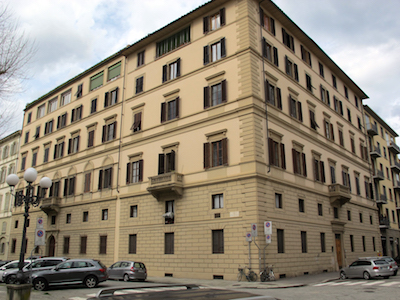Egisto Bracci was born in Florence on New Year’s Day, 1830. His career as an architect began very early: he was first apprenticed to a studio at sixteen, and soon after he joined the staff of Enrico Presenti, one of the city’s leading architects. In the studio, Bracci collaborated on the design of the stations of the Montevarchi-Arezzo railway, and to the digging of a mine in Tana. In this way, he gained a sound technical grounding and progressed to authoring his own designs in the studio of Engineer Del Noce. Projects of this period are the restoration of the Piaggeschi Palace (now Palazzo Geddes da Filicaja) and of the Montebello Hotel, both in Florence.
A few years later Bracci left Florence to volunteer in the Italian Wars of Independence, but soon fell ill and was forced to leave the army and return to his hometown. He was still able to help war-stricken Italy by working as a nurse during the cholera epidemic of 1854.
At this point, Bracci started working as a freelance architect, building a palace for the Baron of Vaguonville (now Palazzo Giuntini), a simple but elegant structure beautifully placed on the Lungarno, Florence’s riverside walk. He also realized the Sariette Palace (now in via Calzaioli), and other constructions for the Levi family. A grand project for a monumental cemetery, commissioned by the city of Florence when it was the capital of Italy (1865–1870) was never constructed. On 31 December 1879, he was elected as resident professor of the Academy of Arts and Drawing, crowning a career characterized by an eclectic, refined neoclassicism well-suited to nineteenth-century aristocracy and high bourgeoisie.
Bracci died in Florence in August 1909.
References: Marco Dezzi Bardeschi, “BRACCI, Egisto”, Dizionario Biografico degli Italiani, vol. 13 (1971), http://www.treccani.it/enciclopedia/egisto-bracci_%28Dizionario_Biografico%29/
Giacomo Brogi, Florence: View from the Viale de’ Colli, c. 1870. Cat. no. 3011.
The Montevarchi-Terranuova railway station in 1863, a few months later after the inauguration of the line.
Palazo Geddes da Filicaja, Piazza Massimo d’Azeglio 7- 8, Florence.
Palazzo Giuntini, Lungarno Amerigo Vespucci 10, Florence.



